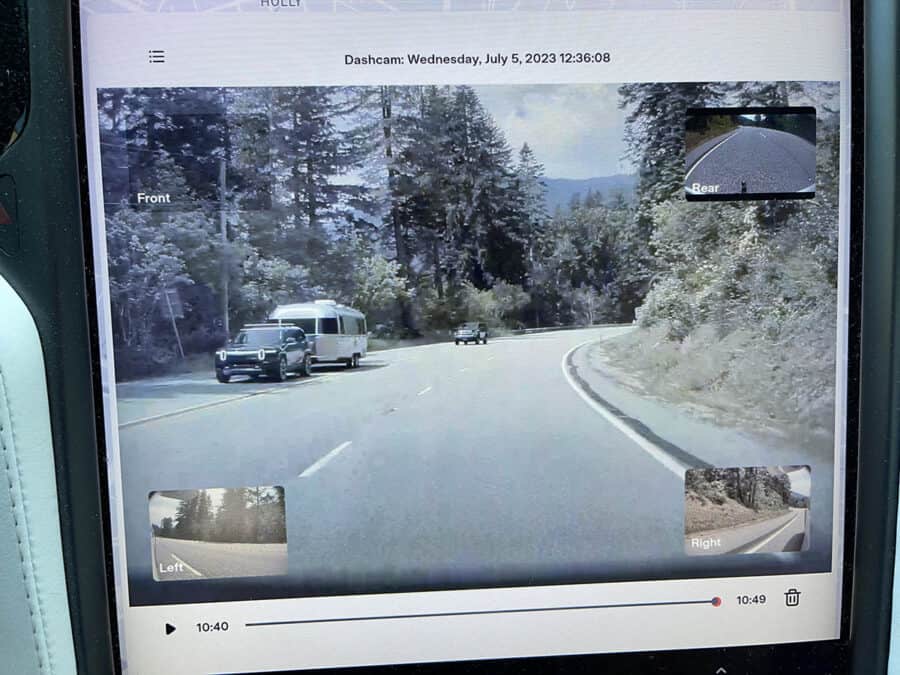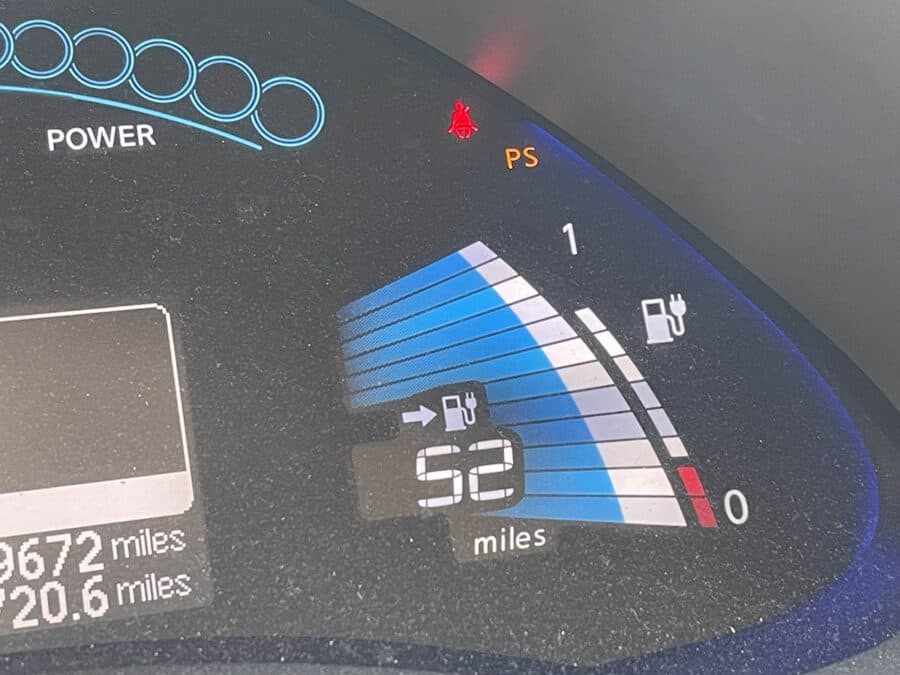Electric vehicle range anxiety is a common concern among EV drivers, particularly those embarking on longer trips. This apprehension stems from the fear that an electric vehicle’s battery might deplete before reaching a charging point, stranding the driver. Nevertheless, creative solutions are being created to combat this concern.
In this blog post, we delve into Peer-to-Peer Car Charging (P2C2), a promising approach aimed at mitigating EV range anxiety. We’ll explore various aspects of P2C2 such as Mobile Charging Stations and in-motion charge sharing which could revolutionize how we perceive long-distance travel in electric cars.
We will also discuss potential carbon emission reductions with P2C charge sharing and understand the car-to-car charging mechanism. Finally, you’ll discover fast-charge sharing techniques incorporated into the P2C framework and explore synergies between platooning and peer-to-peer charging.
The Promise and Challenges of Battery Electric Vehicles (BEVs)
BEVs are like superheroes fighting climate change, with improved fuel economy, lower costs, and reduced emissions. But wait, they face some villains too.
The Range Anxiety Monster
BEVs have a limited range, causing “range anxiety” among buyers. Will they make it to their destination or find a charging station? It’s like a real-life game of “Will I or Won’t I?”

The Slowpoke Charging Times
Charging BEVs takes longer than refueling at gas stations. It’s like waiting for a sloth to finish its meal. Hurry up, we’ve got places to be.
The Missing Charging Stations Mystery
There aren’t enough public charging stations, leaving people without private parking spaces in a pickle. It’s like attempting to locate a minuscule object in an immense stack of hay, all while having no energy left.
The Price Tag Trouble
Most BEVs still cost more upfront than their gasoline counterparts. Even with government incentives, it’s like paying extra for a fancy electric toothbrush. Is it worth it?
To unlock the true potential of BEVs and save the day, we need solutions to overcome these challenges. Let’s explore innovative approaches, like peer-to-peer car charging systems, to make BEVs the heroes of our transportation system.
Overcoming Barriers with Peer-to-Peer Car Charging (P2C2)
Despite the bright future of electric vehicles (EVs), there are still some impediments to be addressed. One major hurdle is the lack of charging infrastructure. Do not fear, P2C2 is here to provide a remedy.
Introducing Mobile Charging Stations (MoCS)
In the world of P2C, Mobile Charging Stations or MoCS are the heroes we need. These are electric vehicles equipped with extra batteries to share charge with other EVs while on the move. Say goodbye to range anxiety and hello to convenient charging on the go.
In-Motion Charge Sharing
Believe it or not, two moving vehicles can actually share battery charge through a cloud-based control system. It’s like a high-tech energy exchange program for cars. This groundbreaking technology opens up a world of possibilities for sustainable transportation.
Multiple Batteries for Maximum Power
To make power sharing between cars a breeze, P2C charging utilizes multiple batteries within each vehicle. This clever design allows one battery to charge while another happily shares its energy with a fellow EV. No performance compromises here.
This innovative framework not only eliminates range anxiety but also reduces the need for costly charging infrastructure. Say goodbye to space constraints and installation headaches. P2C2 is the way to go.
Designing the P2C2 Framework
Creating the P2C2 Framework is a revolutionary move for Battery Electric Vehicles (BEVs), as it necessitated innovative solutions to surpass traditional charging techniques. It required some serious brainpower to overcome the challenges of traditional charging methods.
At its core, the P2C2 system relies on a cloud-based control mechanism. This fancy software coordinates between BEVs in real-time, identifying vehicles in need of charge and those willing to share. We had to be clever in our approach to maintain a seamless operation.
Simulation platforms test different scenarios and optimize performance. These simulations helped us fine-tune parameters like vehicle speed, battery capacity, and distance between cars. The result? A solution that tackles range anxiety among BEV users like a boss.
- Determining Need: An algorithm to accurately figure out when a vehicle needs a charge based on battery life and upcoming routes.
- Finding Donors: Algorithms can identify nearby vehicles with extra energy to spare.
- Scheduling Transfers: Transfers can be scheduled efficiently to avoid traffic disruptions and delays.
All these steps ensured smooth coordination between moving vehicles while keeping safety in check. Simulations showed major improvements in BEV mobility compared to traditional charging methods.
Implementing P2C2 globally could lead to greener transportation solutions by reducing reliance on fossil fuels. Electric transport is the future, and our framework makes it practical for everyday use. Click to Tweet
Potential Carbon Emission Reductions with P2C Charge Sharing
As we strive to build a greener tomorrow, the potential of Battery Electric Vehicles (BEVs) in decreasing carbon emissions is unmistakable. However, the source of electricity used to charge these vehicles plays a significant part in determining their actual environmental impact.
A major breakthrough could be achieved by powering Mobile Charging Stations (MoCS) using renewable energy sources like solar power instead of grid electricity. This approach not only enhances the sustainability factor but also offers substantial reductions in carbon emissions.
Studies have shown that if BEVs are sustained by solar-powered MoCS, an estimated 94% reduction in carbon emission can be realized compared to conventional charging methods. This dramatic decrease underscores the potential benefits and effectiveness of Peer-to-Peer Car Charging (P2C2).
- Solar Power Integration: Incorporating solar power technology into MoCS design can harness clean energy for vehicle charging purposes while reducing dependency on non-renewable resources.
- Eco-friendly Operation: By operating on renewable energy, P2C charge sharing significantly reduces harmful greenhouse gas emissions associated with traditional fossil fuel-based power generation methods.
- Cutting-edge Innovation: The integration of green technologies such as solar panels within our P2C framework represents forward-thinking innovation aimed at creating cleaner transportation solutions for our planet’s future.
In essence, adopting renewable energy powered mobile charging stations within the peer-to-peer car charging framework holds great promise towards making electric vehicle usage truly eco-friendly. It provides us with a practical pathway towards achieving significant reductions in global carbon emissions and brings us one step closer to realizing our goal of sustainable mobility solutions for all. Click to Tweet
Understanding Car-to-Car Charging Mechanism
The concept of transferring charge from one vehicle to another while both are in motion presents an exciting yet challenging prospect. Car-to-car charging could revolutionize the EV industry, making range anxiety a thing of the past and encouraging more people to make the switch.
Wired Connection Between Vehicles
A wired connection between two moving vehicles might seem daunting, but with autonomous driving technology, it’s not far-fetched anymore. Autopilot systems would handle the precise positioning and speed of both cars during charging, ensuring safety and efficiency.
This approach requires specialized equipment like retractable cables or robotic arms to establish and maintain a secure connection. Similar technologies are already used in industries like automated guided vehicles.
Drone-Assisted Energy Transfer
An alternative solution could involve using drones equipped with batteries to fly from one vehicle to another, transferring energy wirelessly via induction coils installed on top of EVs. This drone-assisted energy transfer system offers flexibility and independence from road infrastructure.
Drones have been making strides in various sectors, including logistics, where they’re used for delivery services. With further development, they hold potential for revolutionizing EV charging mechanisms too.
Incorporating Fast Charge Sharing Techniques into P2C Framework
Fast charge sharing techniques are like the secret sauce in our P2C framework. They make charging cars a breeze, without breaking the bank.
Internal Resistance Detection Technique
We’re keeping a close eye on the electrical resistance in each battery. It’s like having a personal trainer for your car’s power source, making sure it’s in top shape during charging.
Real-Time Battery Model Based Optimal Programming
Software can calculate the best way to distribute power among multiple batteries. It’s like having a genius mathematician in your car, making sure every drop of energy is used efficiently.
- Battery State-of-Charge: How much juice each battery has left, so we can distribute power accordingly.
- Battery Health: Taking into account the age and usage patterns of the batteries, because we all need a little TLC.
- Ambient Conditions: Factor in the weather, because even batteries can be affected by the elements.
With a smart management system, efficiency and extending vehicle range can be maximized. Having an intelligent battery management system is like having a virtual assistant to ensure your car is always ready and powered up. For more insights on battery management systems for electric vehicles, check out this informative article on Battery Management Systems for Electric Vehicles. Click to Tweet
FAQs in Relation to Electric Vehicle Range Anxiety
Is EV range anxiety real?
Yes, EV range anxiety is a genuine concern for some owners due to the limited distance an EV can travel before needing recharging.
What is the phenomenon of range anxiety in electric vehicles?
Range anxiety refers to the fear that an electric vehicle will run out of charge before reaching its destination.
What is range anxiety for EV owners?
For EV owners, range anxiety is the worry about their car’s battery depleting before they can recharge it.
How do you overcome range anxiety with EV?
Overcoming range anxiety involves planning routes around charging stations, maintaining your battery properly, and utilizing technologies like peer-to-peer charging.
Conclusion
In conclusion, we need to tackle electric vehicle range anxiety to boost the popularity of battery electric vehicles (BEVs).
How? By introducing peer-to-peer car charging (P2C2) with mobile charging stations and in-motion charge sharing.
And let’s not forget about using multiple batteries and fast charge sharing techniques to address concerns about limited range.
But wait, there’s more! We can take it a step further by incorporating platooning and drone-assisted energy transfer into the P2C framework.
Why? Because these advancements have the potential to reduce carbon emissions and create a more sustainable future.
So, let’s embrace these innovations and boost our confidence in BEV ownership.
The future of this electrifying adventure is promising. As more research is done and advancements are made, we might just witness a convoy of self-charging electric cars ruling the roads. Buckle up, folks, because the electric revolution is just getting started.

